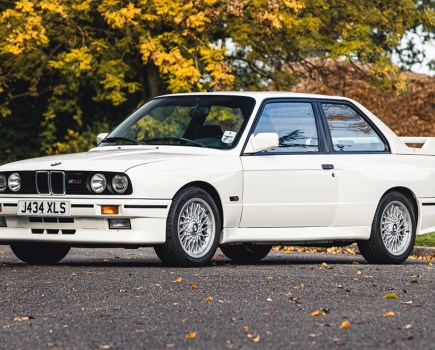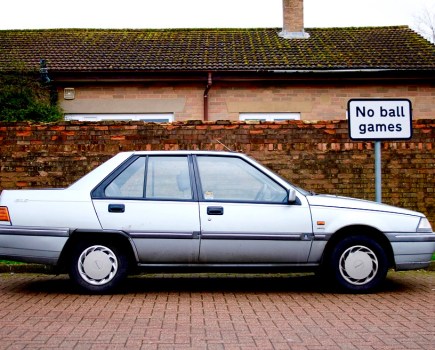It’s hard to get excited about today’s cars, and Nigel reckons it’s simply because of the lack of real characters still in the industry today…
Too many robots? Well that’s my view, and I’m not just talking about the mechanical versions, programmed by super-clever computers either. It also refers to the digital design studio operatives, using algorithms rather than HB pencils and bashing out yet another model that is proudly claimed to follow a manufacturer’s familiar ‘look.’
Recently I have spent some time driving a new Land Rover Discovery Sport, which is quite simply a hugely competent, well-built, comfortable and refined modern SUV. It also has all the character of left over custard. There seems to be so little about the vehicle that you can actually attribute to having been influenced by a human being. Jaguar Land Rover surprised many with the Evoque model, which six years ago brought a very different design to the market, only for the company to trot out similar versions of the same idea ever since.
Over the years, I have been to numerous new car launches where some sharpsuited creative director has been introduced to explain the design ‘clues’ in the company’s new model; the gentle curves or shapes that address the vehicle’s heritage, often giving it a value it doesn’t deserve. If we need to be directed by the designer to the ‘clues,’ then it’s obviously not obvious, and to my simple mind surely fails to do its job and stimulate the onlooker.
It is difficult when discussing this not to sound like some curmudgeonly old bloke, lamenting about the ‘good old days’ and starting every sentence with the words, “now in my day…”. It’s not that all older designs are ‘better’ than those of today’s computer produced products. After all, someone has to have been responsible for the Austin Maxi, only to follow that gruesome saloon with the Princess. And while the Italians are often cited to have produced some of the world’s greatest motoring shapes, let’s not forget that while Giugiaro’s respected design studio gave us some beautiful creations, he obviously let the work experience student loose when it came to the Fiat Strada.
What’s missing today are those very special, unique characters in the motor industry who could have such influence on the product. Would we ever have got the Mini if it hadn’t been for Alec Issigonis? A flawed genius perhaps, nevertheless in 1959 he produced a design that did not need to be explained by anyone. No ‘clues’ were needed, he simply produced the first ever small, family car, which was able to be mass-produced and changed the whole future of the motor industry.
I never had the pleasure of meeting Issigonis, but having been lucky enough to have spent a lot of time with John Cooper, I do feel I got to know him just a bit. It always amused me that John didn’t necessarily see eye-to-eye with Issigonis, but the mutual respect was obviously there. When once asked, by Lord Stokes at British Leyland, “and exactly what do you do?” John replied, “oh I come up here once a fortnight to wind Issigonis up”. The very existence of the Mini Cooper was thanks to that winding up, with Issigonis originally against Cooper’s belief the Mini could be turned into a performance road, race and rally weapon, but when listening to John explain, it seems Issigonis’ character and engineering brilliance had much to do with what was eventually produced.
But then Stokes side-lined Issigonis and completely ignored Cooper, to oversee a period of disastrous management for the British motor industry. It’s often said that the company never made a profit on Mini production but that was no fault of the original designer, and without the Mini Cooper would we have had the amazing global growth of the hot hatch brigade?
What value could you put on the superb designer’s eye of Sir William Lyons, and the influence he had on Jaguar’s successes? And then there’s Colin Chapman, an engineer capable of producing world championship winning racing cars that revolutionised areas of the sport, and also the Lotus Elan sports car; a design that was many years later reproduced by the Japanese to produce the highly successful Mazda MX-5.
One lesser known character came back to mind recently when I was researching information about Bristol Cars. Anthony Crook, better known as Tony, was a talented race driver and garage owner who took over Bristol Cars in 1973. Like Issigonis, it is claimed that he once ‘designed’ a Bristol model ‘on the back of an envelope’ and certainly he was the very essence of the company and what made Bristol cars so individual.
As a junior reporter on Autocar, I was once sent to meet Tony to go for a test drive in the new, as yet unannounced, Bristol Type 603. The instructions I was given took me to a private London Mews address where this tall gangly man, rather like my old headmaster, smiled and grinned as he unlocked the garage doors to expose the Bristol. The sparkle in his eye and his enthusiasm was overpowering and seemingly within minutes I was behind the wheel of the thing and we were hammering down the A4 at what I thought was an indecent speed, but no: It was pouring with rain at the time, yet Crooks kept insisting that I go faster, faster, “she’ll cruise at this speed all day, you know”.
So will the Discovery Sport I guess, but somehow, it’s not quite the same…






